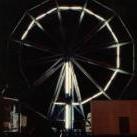Leaderboard
Popular Content
Showing content with the highest reputation on 07/11/2016 in all areas
-
An inside look at Bethlehem Steel, the plant that made the steel for many American cities - until the end. This is what the end looked like. I added some sound design to the photo narrative, but it's the photographs that tell the story. Some sound effects I made myself and others came courtesy of the BBC Sound Effects Library. The photos are excellent and I wish I could give credit to the photographer, but I don't know who he was. He might have worked there, he might not have worked there. The photos were not signed.1 point
-
This piece was written as a commission for a pianist in a school I used to go to. It was written pretty quickly and is based on the Hans Christian Anderson version of the story, not the Disney version. It gets weird in some places but I hope you all enjoy! (And sorry it's kind of long, haha)1 point
-
This is a transcription for cello duet of the second movement of a double violin sonata I wrote a long time ago. An acquaintance who is an amateur cellist very kindly recorded both parts for me so this is his performance. One of my very few works to have actually been performed :) . I also attached a Garritan realized version as well.1 point
-
1 point
-
i think Dave Brubeck's ouevre is really an classically inspired jazz oeuvre, you can hear it all the time, no messy chords, very structured. always using counterpoint which is a rare with most jazz pianist!1 point
-
I admire Dave Brubeck, the most, I listened to his music the most in my life, and i keep coming back to his compositions, ofcourse he is a jazz player and not an average composer, but he still made a lot of progress for jazz quartet ensemble and improvisation also, later in his life he went to the more composery style of music ment for church. another thing he really can capture is a place or nature, he made a whole album about japan, with great influences from there,(fuyijama and koto song) also i like his life, and smile in the pictures. And to be honest, he got me through hard times when i was younger,1 point
-
This is kind of a piece I had written before knowing much about theory, but knew enough about composition and form to formulate a coherent piece. It didn't help me get into Oberlin so I'd love to hear why from you!1 point
-
Assuming that the ideas are organized more or less like this: ABCDA'B'C' (I do not like this type of analysis by itself, but I want to have letters by which to refer to the ideas), I think that the "A" material is very strong. Here's what I like about it: The tonal material manages to be ambiguous while being fully diatonic. It is presented as if it were in a minor pentatonic mode on G#, but then you decide to introduce E# and all of a sudden the pentatonic accompaniment is reinterpreted as if belonging to the Dorian mode from the same tonic. It's a subtle effect, but the real touch of genius occurs when you introduce a B natural in the bass. By asserting it so strongly the whole thing suddenly takes on somewhat of a Lydian character because of the perceived change in tonal center, but the effect is not so strong as to completely diminish the Dorian sound. So really, for a moment it is in neither Dorian nor Lydian. But then you do something clever… You introduce sporadic A#s into the accompaniment, so that it ceases to be purely pentatonic. After all, the pentatonic character of the accompaniment is what makes all this magic possible; because of its neutrality and lack of disposition you can choose which notes to add to it to make it change meaning. So now the music is undeniably in Dorian, right? Hold on… where is the E# I was expecting in measure 5? It never came! Now the A# takes on a totally new meaning and you start to emphasize D#, shifting the music in the direction of the Aeolian mode. It seems that its dominion is uncontested until, sure enough, the B natural returns in measure 7 to turn everything up on its head again… I would also like to note that the rhythm contains similar tricks. It was clever to set this kind of material to 7/8 time, because the mind is less adept at subconsciously counting its beats. It is actually fairly well-behaved irregularity if you are paying attention, which is why it is necessary to disturb the balance, which you do with the accents in measures 3 and 4. This is just enough to make you go: "Huh?" and question the pulse. This of course coincides roughly with the entrance of the E# for the second time and the change to the Aeolian region. You realize of course that accenting any of the "foreign" notes directly means instant death, and instead shock the audience before their arrival, to provide a cushion for them. This makes them smoother without ruining their effect. You of course also seize the opportunity as you are going into the Aeolian region to change the time signature, and again when reintroducing the B in the bass. The same praise goes for your treatment of the " A' " material, in fact the way that it is varied from "A" is very cool. I won't labor you with an in-depth analysis but I will continue to study it in my own time. I also love the entire section marked "Poco meno mosso" at the end. There is one minor point that I want to mention, which is that the B natural in 74 clearly belongs to both voices, or at the very least the lower one - not the upper one. The ear follows it as if it belonged to the lower voice but it isn't written that way - the pianist would play it with the left hand anyway, which is why it is disturbing that it is only written in the upper voice. I recommend moving it into the lower staff and cross-staff beaming it. I find it especially poignant when the material from "C" (at least, I consider it to be very loosely derived from "C") is played in polyrhythm with the original accompaniment from "A", transposed. It is a brilliant effect. Seriously, I am very impressed with all of the ideas that are going on in these sections. It is fully on par with Debussy and Ravel in engineered fogginess… The rest I do not find convincing. Rather boring actually, as it descends into the worst kind of sentimentality with very in your face motivic material and little subtlety. The worst moment is the G# in bar 36. A leading tone - in Aeolian? That's so Classical… I thought you were trying to avoid the leading tone, like Debussy when he began his explorations? These sections are not terrible by any means, of course, but I wish to express the contrast I feel between them and the ones I described above. It is like they belong to a different piece… I hope my thoughts were summarized somewhat intelligibly. Good luck with your writing, you have a very natural grasp on it.1 point
-
Just drooling haha! I guess something went wrong with the export.1 point
-
1 point
-
I especially love the more intimate works of baroque music. And this is such a calming work. And a nice performance too. Though it is minimalist I think there could be room for a third part, for a violin, to make it a trio. Hve you considered this? Also, somehow this invokes Stravinsky's Serenade In A for piano to me, second movement, because it is not strictly baroque.1 point
-
I like your music very much, Danish. I remember this from before, especially the beginning open fifths which I must have commented on... The new Tarantella is not as good as the preceding movements. I mean it's good, but it needs to be less whimsical and much more relentless. No pauses, no reflection. Damn the torpedoes, just drive! Now of course I'm talking empirical Tarantella. You've added additional elements that - it could be argued - make it less effective in that regard. (I'm going through the exact same thing with my Humoresque with Sojar) You try to add a little something to a style or offer a unique angle to it, and people complain that it's not "what it's supposed to be." So, IMO, your 4th movement should be more visceral and muscular, being the climactic last movement. Though as I said, is good music as is.1 point
-
1 point
-
Beautiful. And posting both versions really clarifies the superiority of live over even good recording software like Garritan.1 point





